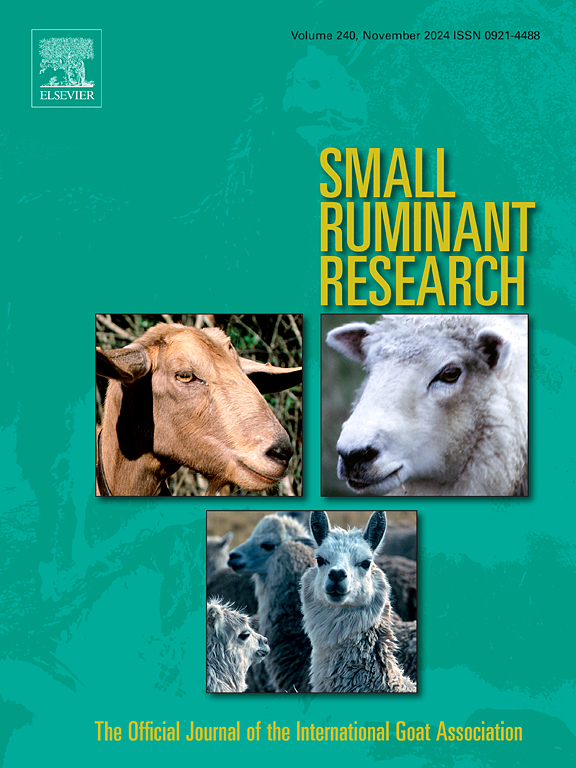Conventional and alternative treatment of mastitis in dairy goats
IF 1.6
3区 农林科学
Q2 AGRICULTURE, DAIRY & ANIMAL SCIENCE
引用次数: 0
Abstract
Mastitis, an inflammatory condition of the mammary gland primarily caused by bacterial infections, is one of the most economically significant diseases in dairy goat farming. Despite the global importance of goat breeding, there is a critical lack of medications specifically approved for treating diseases in goats. The limited availability of species-specific veterinary pharmaceuticals has led to the widespread off-label use of cattle medications, raising concerns about their efficacy, safety, and appropriate withdrawal periods for goats, a there are species-specific physiological differences, such as higher somatic cell counts and the tendency for deep-seated infections in goats. This paper compiles the main findings from studies on both conventional and alternative treatments for bacterial mastitis in goats worldwide. Conventional antimicrobial therapies, including intramammary (IMM) and intramuscular (IM) administration, show variable efficacy. Treatment often involves a combination of different antimicrobials, the addition of anti-inflammatory agents, and the use of multiple routes of application (IMM or IM). While homeopathy has not demonstrated significant efficacy in goats, alternative treatments such as phytotherapeutics, bacteriophages, bacteriocins, nanoparticles, and immunotherapeutic approaches offer promising avenues to reduce reliance on antibiotics and combat antimicrobial resistance. However, research on these alternatives remains limited, particularly in goats, highlighting the urgent need for species-specific studies. Both conventional and alternative treatment protocols hold significant potential for further development in goats but require more rigorous scientific exploration. This study underscores the scarcity of information on products specifically designed for mastitis treatment in goats, as well as the limited research available when compared to dairy cattle. The review emphasizes the importance of developing tailored treatment protocols and advancing research on novel therapies to enhance mastitis management in dairy goats, ensuring sustainable production and safeguarding animal and human health.
奶山羊乳腺炎的常规与替代治疗
乳腺炎是一种主要由细菌感染引起的乳腺炎症,是奶山羊养殖中最具经济意义的疾病之一。尽管山羊养殖在全球具有重要意义,但目前严重缺乏专门用于治疗山羊疾病的药物。特定物种兽药的有限供应导致了牛类药物的广泛使用,引起了对其有效性、安全性和山羊适当停药期的担忧,因为山羊存在特定物种的生理差异,例如更高的体细胞计数和更深层次感染的趋势。本文汇编了世界范围内山羊细菌性乳腺炎的常规治疗和替代治疗的主要研究结果。传统的抗菌药物治疗,包括乳腺内(IMM)和肌肉内(IM)给药,显示出不同的疗效。治疗通常涉及不同抗菌剂的组合,添加抗炎剂和使用多种应用途径(IMM或IM)。虽然顺势疗法在山羊身上没有显示出显著的疗效,但植物疗法、噬菌体、细菌素、纳米颗粒和免疫治疗等替代疗法为减少对抗生素的依赖和对抗抗菌素耐药性提供了有希望的途径。然而,对这些替代品的研究仍然有限,特别是对山羊的研究,这突出表明迫切需要进行特定物种的研究。常规治疗方案和替代治疗方案在山羊的进一步发展中都具有巨大的潜力,但需要更严格的科学探索。这项研究强调了专门为山羊治疗乳腺炎设计的产品信息的缺乏,以及与奶牛相比的有限研究。该综述强调了制定量身定制的治疗方案和推进新疗法研究的重要性,以加强奶山羊的乳腺炎管理,确保可持续生产并保障动物和人类健康。
本文章由计算机程序翻译,如有差异,请以英文原文为准。
求助全文
约1分钟内获得全文
求助全文
来源期刊

Small Ruminant Research
农林科学-奶制品与动物科学
CiteScore
3.10
自引率
11.10%
发文量
210
审稿时长
12.5 weeks
期刊介绍:
Small Ruminant Research publishes original, basic and applied research articles, technical notes, and review articles on research relating to goats, sheep, deer, the New World camelids llama, alpaca, vicuna and guanaco, and the Old World camels.
Topics covered include nutrition, physiology, anatomy, genetics, microbiology, ethology, product technology, socio-economics, management, sustainability and environment, veterinary medicine and husbandry engineering.
 求助内容:
求助内容: 应助结果提醒方式:
应助结果提醒方式:


